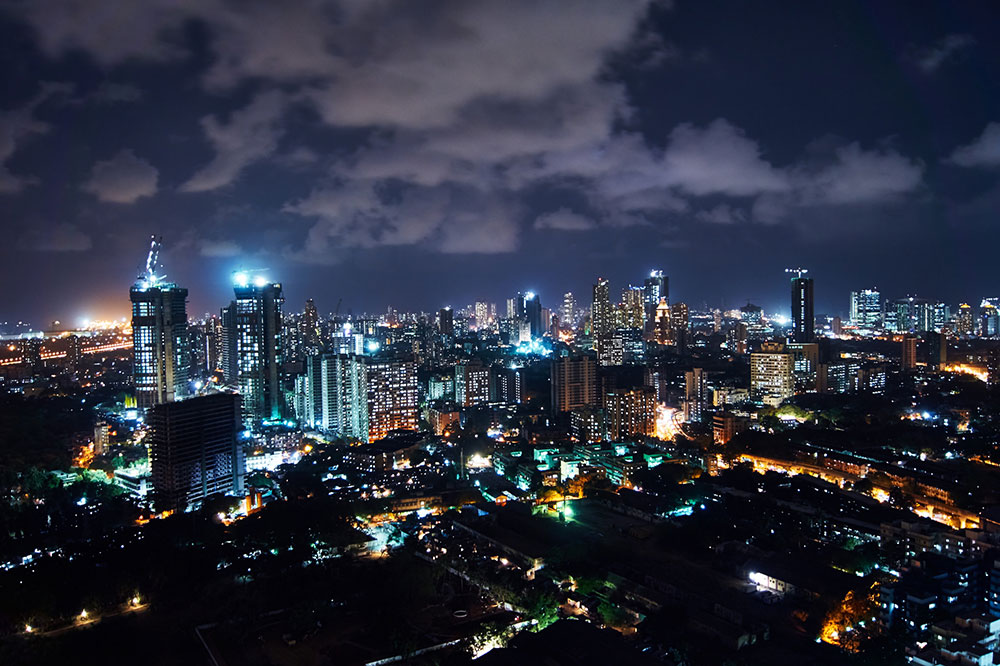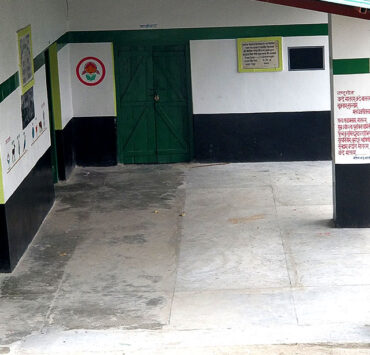In his classic essay about walking in the city, French philosopher Michel de Certeau discussed the significance—both architectural and psychological—of vertical urban growth in modern societies, and the reasoning behind modern society’s obsession with skyscrapers. “The pedestrian’s elevation transforms him into a voyeur,” he wrote, “It transforms the bewitching world into a text… it allows one to read it, to be a solar Eye, looking down like a god.” High-rise buildings and skyscrapers are defended as the only way to accommodate rising populations, but more importantly they are also extensions of mankind’s teetering ego, its desire to be god—a god with the power to escape the earth’s pull, and create a society while at the same time be removed from it.
This desire comes with another, somewhat contradictory, but reactionary desire—the need to compensate for this loss of earth as we move higher into the stratosphere, by releasing horizontal space in which society can, among other things, submit itself to the elements of Nature again. It wants the divine powers of both retreating from nature, and saving it: putting it in assigned locations where it can be tamed and protected.
Harvard economist Edward Glaeser, whose research focuses on the role that cities play in advancing human achievement, wrote that Henry David Thoreau’s lesson for modern urbanists was that “being good to the environment often means staying away from it… when we use less space, we do less environmental harm.” This rings with a fearful, uncertain ego that echoes Frank Lloyd Wright’s suffocated feeling in the urban fabric, his almost Wordsworthian longing for a “natural order.” Wright wanted to both iconicise the city and escape it, piling it high so that it could become a hyper-efficient machine that people would not have to deal with.
* * *
Live with Nature, says the only text of a full front page advertisement in the Delhi Times for luxury apartments in Gurgaon, which are surrounded by greenery on the ground as well as from their balconies and roofs. We want to be in contact with nature, to feel protected from the “cancerous” growth of the city on our own terms while continuing sky-high climbs to dominate, protect, and escape. Modern, Western-aspiring society has a crisis of lifestyle; its problem is not its physical distance from nature, but its emotional distance.
But Bombay fails in many ways, mercifully, at being this ideal modern Western-aspiring city. It is a messy, awkward, non-utopian, intensely human city. Some of its built environment supports human-nature interactions of the most intimate kind. A “natural order” doesn’t have to be prescribed by architects or urban planners designing huge green spaces next to monstrous skyscrapers; it exists, quite naturally, in the way many Bombay communities and spaces work—the way the bhindi in the street markets is often cultivated on the soil of the local railways; the way tapris are often set up around massive trees whose roots and edges are used as makeshift furniture, or shelves.
South Bombay’s dense, mixed-income heritage buildings, so often complained about because of their controlled rent and failure to perform well as pristine housing stock, are made of local, natural materials, and are completely appropriate for the climate, as in tune with the earth as we can hope for them to be. South Bombay is one of the most unique downtowns in the world because its occupants’ use of this extremely high-value property is recognised as a legitimate relationship to the land, even when there is a lack of legal ownership.
In Dharavi Koliwada, groundwater wells still function and are in use; enormous banyan trees intersect with and penetrate concrete walls, often growing half indoors and half outdoors because people have always built and continue to build around the natural topography. Here, seashells can be found in the bricks of some of the buildings, made from sand that was taken from the seashore that Dharavi Koliwada used to be before reclamation; an old sea rock now surrounded by a concrete courtyard is still worshipped by the descendants of fishermen. In the heart of one of the densest, most horizontal parts of Bombay, people are far less subconsciously apologetic about their home and their influence on nature, and have been living in harmony with their landscape since before the city had a name.
These are the spaces in the city that should really be advertised as “living with nature”—not Gurgaon’s foresty luxury skyscrapers, or the Vertical City’s endlessly hollow parkland that is too expansive for human beings to really access without automobiles.
It makes no sense to demonise the urban form for our sense of loss of nature. Living with nature happens every day within the built environment. Bombay is full of environments that, in their organic growth, accommodate a continuity of history and present, of high-rise and low-rise. Without this organicness and continuity, the modern paranoia and uncertainty about our relationship with (and duty towards) the environment arises.
The more powerfully modern cities dream, the more confidence they exude, and the more work they put into conjuring a skyline that photographers and filmmakers and artists can boast of and fall in love with—the more uncertain they seem to become about the earth and their dizzying distance from it. Bombay’s real estate mafia scrambles to put its skyline on the world map, as though it is this sparkling, larger-than-life image that is the economic and social spine of the city, rather than the single units inside the skyline; the pavement sellers, the dhabas, the Scotch-Brites and beedis and single boiled eggs wrapped in newspaper sold under tarpaulin sheets.
* * *
Frank Lloyd Wright’s Vertical City is a particularly impractical utopia, and a truly unpleasant one at that—the product of a society that’s trying to protect both itself and the earth, but has separated these two so distinctly in its consciousness that it has become too anxious to do either. “Staying away from” the environment is neither desirable nor possible, and it belongs entirely to the narrative of power attached to vertical expansion. In this way, perhaps Walter Benjamin’s narrative of instability, in his depiction of skyscrapers and our fascination with them, is actually the most honest way modern society can talk about the need for, and process of, building upwards.
Benjamin’s citizen of modern society, the urban “ascender”, is like the construction worker; he moves “rung by rung, according as chance would offer a narrow foothold, and always like someone who scales dangerous heights and never allows himself a moment to look around, for fear of becoming dizzy (but also because he would save for the end the full force of the panorama opening out for him).” Here, the climber, the high-rise-goer, is vulnerable; they are humbled by both fear and anticipation of this highly “unnatural” ascent of machines. They certainly do not think of themselves as a god. This is also the way that most organic, mixed use, middle- and low-income structures, like those in Dharavi, actually do develop—not with master plans, but step by step, acccommodating the next need, and the next. This small scale presents not just an extremely innovative but also a very human way to build a city.
“Space,” Michel de Certeau wrote, is a “practiced place”. Places create specific functions; in a “place”, no two elements can be in the same location. Spaces, almost humble in their ambiguity, are created by a different, more directionally organic movement. They are created when typologies superimpose on each other, and elements of the landscape can belong to both nature and civilisation.
The true city is a non-utopian one; it is contradictory and it cannot be planned. It’s the centre of “human-nature”, which in the literal sense is perhaps an oxymoron. Interesting urban forms are often created by people working with natural elements at the centre of highly dense metropolises, like the artisans of Dharavi or the fisherfolk of the Koliwadas. These are people whose work calls on them to access not a heightened vantage point but the street, the earth, and small pockets of activity. The city is where this contradiction of “human-nature” must be embodied, where new relationships between humans and the earth are constantly forming and old ones are maintained.










Hey Apurva, it reminds me of a piece you had written on Dharavi, I too have grown up in south and south central Mumbai. Great analyses dear. keep writing